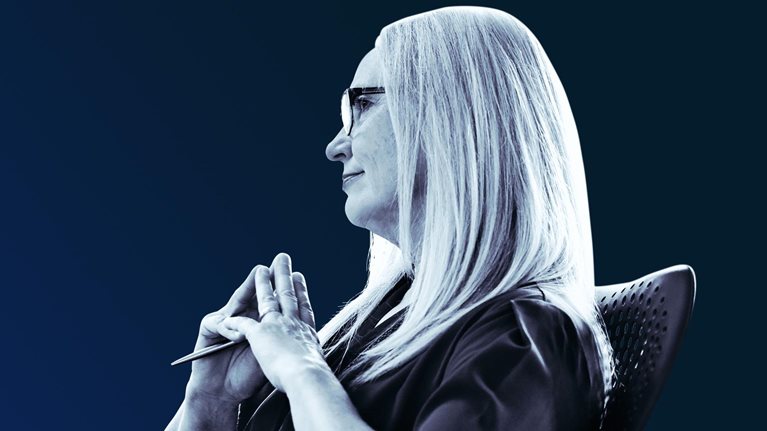Pandemic fatigue: it’s plaguing organizations and employees right now. In 2020, we’ve endured a global pandemic, a massive economic crisis, and widespread social unrest. Layer on top of that forces that are fundamentally reshaping societies—technological innovation, business-model disruption, societal inequality, and workforce automation—and it’s clear that an epidemic of stress has been building, with the COVID-19 crisis as the tipping point.
When you ask people how they are doing and get beyond the perfunctory answers of “I’m fine” or “I’m managing through it,” a deeper level of challenges emerges: “I’m anxious, overwhelmed, and lonely,” “I’m completely burned out,” “I’ve lost my sense of optimism,” “I’m not sure how much longer I can keep going like this.” These experiences go beyond anecdotes: 75 percent of employees in the United States1 and close to a third in the Asia–Pacific region2 report symptoms of burnout. European nations are reporting increasing levels of pandemic fatigue in their populations.3 The number of those who rate their mental health as “very poor” is more than three times higher than before the crisis, and mental-health issues are still likely to rise.
While positive news about highly effective vaccines gives us new hope, it doesn’t change the fact that a lot of people are struggling—and that may be the case for many months to come.
This is about more than coping. As Albert Einstein said, “In the midst of every crisis lies great opportunity.” Organizations have an opportunity to do more than just “get through it,” restoring the performance and work life enjoyed before the crisis. Many employees already have a sense that we aren’t likely to simply “bounce back” to how things were before the COVID-19 crisis. The pandemic, and our collective responses to it, are likely to result in permanent shifts in consumer preferences and buying behavior, business models, and ways of working.
While forging ahead into something new introduces its own uncertainties, it also offers the promise of building on pandemic-related accomplishments, like moving to more flexible and innovative working models, implementing new technologies in weeks rather than months or years, empowering teams, stripping down unnecessary bureaucracy, and making faster decisions amid uncertainty.
We are already seeing the potential for growth and renewal from organizations that have started operating differently during the pandemic. Companies that have viewed the pandemic as an opportunity to migrate to digital technologies are now leading their industries and outperforming peers.
Perhaps most important, companies are waking up to the need for greater empathy and compassion to create a workplace that can unleash the full potential of their people even beyond the crisis. Global trends were already starting to turn the old rules of industrial-age management on their heads, introducing new, more human-centered principles that truly put talent and people at the heart of organizational success.
The pandemic is likely to accelerate those trends. These new ideas have been called everything ranging from the organization of the future to the “teal” organization4 to “humanocracy,”5 but they all have one thing in common: a vision of successful organizations that are intensely human, nurturing the very best elements of emotion, creativity, human connection, and empathy and inspiring emergent leadership at every level.
More than ever, companies are open to trying new things and working differently as they seize the opportunity to emerge stronger. We’ll delve into what leaders can learn from this period of grief and disillusionment to create a brighter future for their employees and organizations alike.

WATCH
A McKinsey Live event on ‘Reenergizing the workforce: How leaders can overcome pandemic fatigue’
Why grit and perseverance are no longer enough
When the pandemic began, many organizations and their employees mustered the energy and determination to respond fast and surprisingly well to unprecedented challenges. Companies rightfully stepped up by focusing on their employees’ health and safety as they muddled through a difficult set of threats and uncertainties. Many organizations saw leaders at all levels step up to the challenge, focus on the most critical issues demanded by the situation, band together, and respond heroically and selflessly to support colleagues, customers, and communities. Initially, there was also novelty in working from home, and many employees were pleasantly surprised by how much could be done virtually. As teams mobilized to respond to the crisis, morale was buoyed by leaders’ inspirational messages and actions showing that “we can get through this together.”
But many months later, with no clear end in sight, the adrenaline rush of those early high-energy sprints has faded. Employees are now trying to sprint through what has become a marathon—an unsustainable pace. This is why we find ourselves in the early stages of a potentially prolonged period of disillusionment, grief, and exhaustion—a period that may get worse before it gets better (Exhibit 1).

In the context of the uncertainty and stress of the COVID-19 crisis, it’s important to understand that this sense of disillusionment is natural, to be expected, and, based on past experiences with similar crises, a normal cognitive response to a massive and traumatic disruption. Disillusionment is distinct from general disappointment and sadness, occurring when deeply held beliefs and expectations are challenged by circumstances. Perhaps best described as fueling “shattered assumptions,”6 COVID-19 has challenged our treasured beliefs about what the future will hold.
We thought we’d be back to the workplace by now, but many are more isolated than ever. We thought work–life balance would be in check by now, but many are still working longer and harder than before, and with no end in sight.
The disillusionment we experience from these deep and negative changes to our reality often has crippling effects on our motivation, mental health, and energy. Compounding this disillusionment is the grief from what we’ve lost, which for some has been deeply profound. In addition to losing loved ones, our informal social fabric has been stripped from us, at least in part. These feelings of isolation and uncertainty are a major source of our exhaustion.
And past crises have shown us that it can take months or even years after the direct operational effects of a crisis are resolved to emerge from the long period of disillusionment and grief that tends to follow. It’s imperative for leaders to move through these phases effectively so they are able to lead with hope and inspiration, although this also can create a dilemma for organizations. While senior leaders are often equipped with the resources and wherewithal to move through the stages of grief, disillusionment, uncertainty, and exhaustion more quickly, perhaps in just a few months, the larger organization typically lags behind and might take two years or more to work through the same personal and emotional challenges.7
In fact, senior leaders can unintentionally make the situation worse when they are unaware of the disconnect between where they are emotionally and where their employees are, prolonging the disillusionment and exhaustion. The key question becomes, how can we navigate through disillusionment more effectively and come out successfully on the other side much faster?
Reenergizing the organization when there are no easy answers
Despite this prolonged period of crisis, many organizations are experimenting with different approaches to reenergize their exhausted workforces and make changes to emerge stronger, together. Here we explore five ways organizations are reenergizing:
1. Administer the antidote to disillusionment: Bounded optimism
To level the slope of the downward curve and emerge stronger faster, leaders should act with bounded optimism. That is, they need to display inspiration, hope, and optimism that’s tempered by reality and help their people make meaning out of the circumstances by creating an understanding of what’s happening, and what responses are appropriate. Meaning builds confidence, efficacy, and endurance but also can serve as a balm if the outcome takes longer or is different from what is expected.
As the prospect of a vaccine nears, this concept is more important than ever. Bounded optimism cautions against thinking a vaccine will return life to normal in a few months. Even if a vaccine works and is safe, it will still need to be manufactured and distributed, and people will still need time to process what has happened to their lives during the pandemic long after a vaccine is available. The leader’s role is to show compassion, and to temper hope with a realistic framework that resonates with employees. Such an approach also maintains a leader’s integrity and authenticity (Exhibit 2).

The Stockdale Paradox offers insights into why bounded optimism is so critical, particularly in this phase of burnout. US Navy Vice Admiral James Stockdale was a prisoner in Vietnam when he was a captain. His challenge was to communicate to his fellow prisoners a sense of hope in a very difficult situation. He later said that those who felt they would be “home by Christmas” fared much worse mentally than those who understood it might take much longer, and adjusted. Many of his fellow prisoners later credited his message of optimism tempered by realism with helping them survive.
In some cases, leaders may have to admit they started with a bad set of assumptions. As employees increasingly yearn to get back to normal, many leaders continue to frame the current circumstances as temporary. While this narrative incites hopeful thinking, which functions as a short-term coping strategy, it can actually have a disillusioning effect as the repercussions of the pandemic drag on, and we realize there may be no return to normal.
Leaders who embrace bounded optimism successfully communicate hopeful messages that are less about returning to normal and more about acceptance. They relay the fact that we’re likely not going back to the way we were, but we’re going to be better than before. In other words, they shift the narrative from what’s been lost to what’s becoming possible, in a balanced way. In particular, grounding this narrative in the organization’s purpose helps employees make sense of their new reality and regain a sense of stability, which can help reignite individual motivation, well-being, and productivity in the workforce.
2. Listen deeply for signs of exhaustion and other natural responses to stress
One of the most challenging parts of this crisis is that, despite the overwhelming desire for a certain and perfect plan to reenergize the organization, there simply isn’t one. Leaders who accept this fact are able to manage the energy and mood of their organizations, taking an adaptive approach that allows them to discover their way to solutions. Such an approach starts with a much deeper and more holistic form of listening than organizations are accustomed to.
For instance, one approach uses leader listening tours, in which executives are trained in deep-listening skills before meeting with colleagues across the organization in virtual focus groups. To create a space for employees to share how they are truly doing, leaders sometimes start by showing vulnerability themselves, which sends a powerful signal that “it’s OK to not be OK.”
Some organizations are starting to use technology-based crowdsourcing tools to tune into what is really contributing to employee exhaustion. Such approaches allow organizations to reach a large portion of the employee base directly and generate a rich set of insights.
For example, one financial institution sent its top executives on a listening tour to better understand the work-from-home employee experience. Within minutes, employees opened up about their growing self-doubts as valued team members and their dwindling sense of belonging at the organization. At the office, their informal encounters with peers and even gossip at the water cooler gave them a sense of connection. Now, the back-to-back nature of video calls has left employees feeling more disconnected than ever, especially from their leaders, with whom most touchpoints are seen as transactional. In response, leaders are trying to create space on their calendars for informal connections that allow for agenda-free, spontaneous, and casual interactions.
Similarly, a global organization recently brought hundreds of colleagues together for an hour-long crowdsourcing “rapid listening session” and found that the lack of work boundaries was one of the strongest contributors to energy drain. Since working from home began, hours have increased as employees struggle with the discipline to set their own boundaries, in part over worries about job security or being seen as irrelevant.
In both organizations, executives said the emotions they felt, ranging from shame to pride, made them want to play a critical role in “managing the energy of others” by starting to make employees feel heard.
Would you like to learn more about our People & Organizational Performance Practice?
In addition to listening directly to employees, organizations can also rely on a multitude of data sources, including collecting data via surveys and natural-language processing. Some examples include employee-experience surveys or pulse checks, mental-health and well-being survey data, and aggregating benefits and disability claims. Tracking this sort of data helps organizations get more sophisticated about what employee segments are most in need, what needs are most acute, and where they need to intervene faster.
Perhaps more important than how organizations listen is how often they listen. It’s not enough to launch a few listening efforts and then act. Organizations must listen continually, taking a regular pulse on how employees are doing. This will be especially important over the next year, as employee moods and needs are bound to fluctuate, with the potential for great impact.
3. Develop adaptability and resilience skills at scale
Research on patients with chronic illness, by Arthur W. Frank, a professor of sociology at the University of Calgary, offers insights into how we process a crisis with an indefinite timeline. In his work The Wounded Storyteller,8 Frank found there were three archetypical responses to being sick: first, individuals who yearn to go back to the way things were, engaging in a “restitution” narrative in which they talk about how much better their lives were before illness; second, individuals who have lost sight of the past and cannot imagine who they could be in the future (they exist only in the present and tell a “chaos” narrative); and third, those who embrace a “quest” narrative, meeting their unchanging circumstances head on, accepting them, and incorporating them as part of their identity and journey. Unsurprisingly, patients who thrived with their chronic conditions choose to go on the third journey and see “illness as the occasion of a journey that becomes a quest.”
The pandemic experience can be viewed through a similar lens: a critical part of succeeding through it will involve embracing the quest to move forward. The ability to grow and develop, especially during times of change and stress, is a new and high-priority muscle for leaders to build. In a new McKinsey capability-building survey of more than 1,200 global leaders and teams, adaptability was one of the top two capabilities identified by senior executives as crucial for supporting their organizations’ growth and recovery from the COVID-19 crisis. The other was inspirational leadership. Indeed, leaders are seizing this opportunity to cultivate a learning mindset in their people and organizations, specifically focusing on building resilience and adaptability now and for the future.
Leaders who strengthen the resilience of their workforce not only do the right thing for their people but also set themselves up to succeed in the new normal of volatility and virtual work. Upskilling on adaptability and resilience can be a powerful way to improve well-being and experience, which in turn has been shown to improve creativity, innovation, engagement, organizational speed, and performance.9 Research indicates the scale is large—organizations that invest in the well-being and energy of their people see four times higher profit,10 and more than 20 percent gains in productivity and innovation.11 They also are better prepared to handle shocks such as COVID-19 or other business-model disruptions with greater speed and resilience in the future.
In our extensive research of past crises, we found promising news. Although we all start at different levels, much about adaptability and resilience is malleable—that is, they can be taught. Many organizations have launched tech-enabled capability-building programs for leaders and their organizations to scale resilient and adaptable behaviors. For instance, a large pharmaceutical company successfully rolled out a program to more than 10,000 employees with the overall aim of building the capacity to learn, adapt, and thrive during times of change.
4. Focus on care, connection, and well-being
Since the start of the pandemic, organizations have launched myriad initiatives, ranging from wellness programs to videoconference happy hours, to support employees. While these have been undertaken in earnest, they’ve often been received by employees as yet another thing to do, and have failed to address the real sources of energy drain. When you think of well-being as a holistic concept, so much more can be done. Organizations need to place greater emphasis than ever on fostering and nurturing human connection and caring.
One approach organizations are taking to improve well-being is to hardwire recovery and self-care into organizational structure. For example, in an environment where employees already have anxiety about the economy and job security, many aren’t taking time off. And even for those who are, with nowhere to vacation, work seems to creep its way in, especially for top talent at the center of critical initiatives. In times of stress, people need time off to recharge and recover. And they need leaders to legitimize and actively role model it.
In the navy, after particularly stressful periods, captains navigate ships to calm waters for sailors to rest. In a corporate environment, calmer waters might be leaders actually taking time off to unplug. Organizations that are taking this the most seriously have gone as far as mandating that employees take personal time off or giving them an extra paid day or two off. Others are experimenting with workload balancing, so top-performing leaders have more capacity to take the time needed to recharge.
Prioritization is a struggle that long predates, and has massively been exacerbated by, the COVID-19 crisis. Now is the time for organizations to finally tackle busyness and help create a more manageable environment for employees by helping them focus on the work that matters most. One global organization put a halt to new initiatives for a period of two months to allow for recovery, while another now periodically examines which initiatives to sunset and how to intentionally limit the amount of work in progress.
Some leaders are getting stricter with their calendars by declining all meetings in which they can’t uniquely add value (which can be a significant portion) or by cleansheeting their calendars all together. Others are talking with direct reports to help them clarify priorities and pursue more short-term, achievable goals. Some organizations are encouraging employees to take a zero-based-budgeting approach to meetings, an exercise that will empower them to choose which meetings to attend.
Such efforts give employees a welcome sense of stability, discipline, and control. However, if leaders see these initiatives as quick fixes, they will fail. Leaders must hold a deep conviction that managing the energy of their teams is a continuing responsibility. To complement this, leaders must also focus on showing appreciation when goals and priorities are completed. Celebrating wins, even small ones, like “wins of the week,” can have a big impact during chaotic times.
None of this is to say that more formal employee well-being programs should be neglected. Such programs can be immensely valuable when done well, especially when they destigmatize mental-health challenges, support inclusive environments, and promote physical activity. But it’s critical to measure their impact.
Organizations should assess how many colleagues are actively engaged in the programs they’ve launched. They should analyze what kind of impact their mindfulness programs, stress-management training, mental-health-awareness campaigns, and “video-free Thursdays” are having. Are people using them? Are they sticking to them? What’s making this possible or what’s making it hard? It’s not enough just to launch initiatives. Organizations need to listen, test, measure, learn, and repeat.
5. Unleash energy by evolving the organization’s operating model
As we’ve noted above, the most effective leaders see the COVID-19 crisis as a way to reimagine the postpandemic organization. They are doing this in three key ways: by operationalizing and activating purpose; by reimagining the work, workplace, and workforce of the future; and by creating a faster and more flexible organizational structure.
Connecting to purpose can be energizing in its own right, but operationalizing purpose, making it a core component in how companies work, can help organizations and employees focus on what really matters: spending more time on activities that directly deliver on an organization’s purpose and strategic value agenda, and less time on things that are peripheral to what creates value and enables that purpose. When everyone is clear not only on what the organization is doing but also on why it’s doing it, it’s easier to strategically prioritize, to identify which work can be delayed, which meetings can be skipped, and for which decisions “good enough” is actually good enough.
It also helps us to empower others—it turns out that many decisions not only aren’t made at the right level, but also part of the challenge of pushing decisions down is that the people making them lose sight of the larger purpose and strategic North Star that helps define what a good decision really is. Aligning the organization on what really matters, the strategic value agenda, and the higher purpose can help energize the organization not only through inspiration and meaning but also by helping delegate and empower, move faster, strategically prioritize, and take less important things off the plate.
Another way organizations are evolving is to reimagine the future workplace and working model. While the future remains uncertain, many executives have embraced the idea of a hybrid virtual working model to give employees the flexibility they desire. To figure out what that might look like, organizations are turning to their employees. Using virtual-reality goggles and rapid-ideation techniques, employees are engaging in design workshops to explore what offices should be used for and how teams can best collaborate when some are at home and some are in the office. While no organization has the exact answer yet (that we know of), many are seeing the office of the future as a meeting place for collaboration, connection, and innovation and much less as a heads-down cubical farm for individual work.
Beyond the future workplace, organizations also are profoundly reimagining their operating models. One of the most interesting findings that emerged from our COVID-19 research was that agile organizations were roughly two times as fast as their peers in reacting to the crisis.
Many are experimenting with moving from an annual planning cycle to a quarterly planning cycle, with a 90-day cadence to learn from what was accomplished past cycle and then to reset priorities as needed, dynamically flowing resources (people and capital) to where they’re needed most. Organizations also are seeking to build a more meaningful culture of empowerment by streamlining their decision governance, pushing decisions down to a network of empowered teams. In aggregate, the impact is that organizations are able to create value by acting with unprecedented speed, by creating an environment in which employees are encouraged to bring their talents to bear, and by opening up capacity for leaders to spend more time caring for and connecting with teams.
Responding to this crisis is a defining leadership moment. By exploring these five ways to reenergize their organizations, leaders can help individuals view work as a place where they can grow personally, nurture their talent, and live their purpose. Organizations themselves wouldn’t simply survive, but could “win in the turn” and emerge more human centered, innovative, and better positioned to adapt to the challenges ahead.


